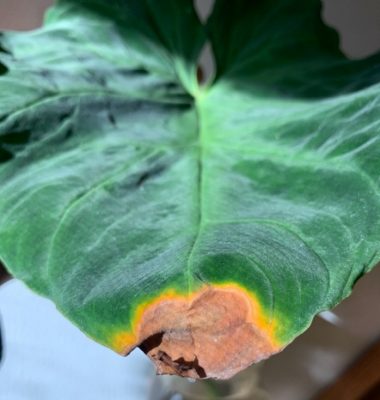Through the process of photosynthesis, plants manufacture the sugars and carbohydrates needed for growth and development. They require at least 18 elements to carry on this process. Plants obtain the carbon, oxygen, and hydrogen from air and water. Outdoor plants would obtain the other nutrients required for growth from the soil. Houseplants rely on us to supply these nutrients through the application of fertilizers. Underfertilized houseplants often exhibit symptoms of slow growth, weak stems, pale leaves and reduced flowering.
Types of fertilizers
Houseplant fertilizers come in a number of formulations. Some are wettable powders or concentrated liquids that are diluted with water then applied to the potted plant. Time release fertilizers are available as coated pellets or as spikes. A few are sold premixed and applied directly to the potting soil.
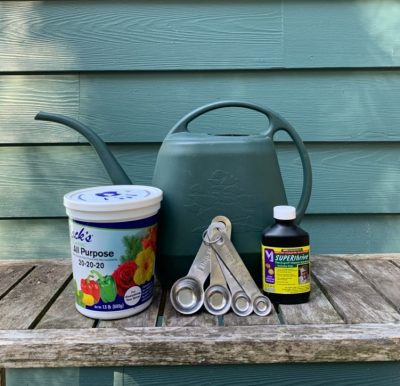
The label on a fertilizer container states the guaranteed analysis or grade. These are the three numbers listed on the package (e.g., 8-7-6). They refer to the percentage by dry weight of total nitrogen, available phosphate and water-soluble potassium contained in the fertilizer. Plants require large amounts of these three nutrients, and they are often referred to as primary nutrients or macronutrients. Nitrogen promotes green, leafy growth, phosphorus encourages flowering and root growth, and potassium is necessary for stem strength and stress tolerance. Secondary nutrients that are required in slightly lesser quantities include calcium, magnesium, and sulfur. Ground limestone is sometimes added to potting mixes to supply calcium and magnesium. Sulfur is a component of organic matter, organic soil amendments as well as many fertilizers.
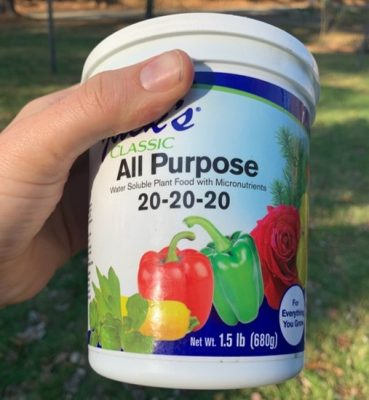
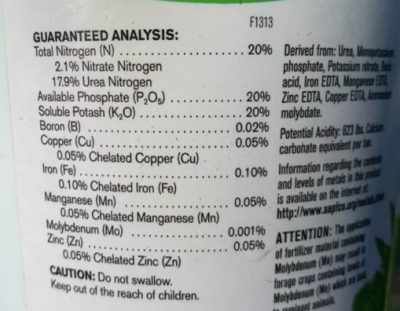
The fertilizer label will also state from what sources (chemical or organic/natural) these nutrients are derived. If synthetic or chemical fertilizers contain trace elements, these too will be listed on the label. Trace elements or micronutrients are need by plants in very small amounts and include iron, boron, zinc, copper, molybdenum, chlorine, manganese and possibly cobalt, nickel and silicon. It is usually safe to assume that organically derived fertilizers, because of their nature, contain some or all of the necessary micronutrients. For those not using an organic houseplant fertilizer, consider purchasing a chemical fertilizer that does include micronutrients since they are typically not present in soilless potting mixes.
Choosing a fertilizer
Which is the best houseplant fertilizer to use? This will depend on the types of plants being grown, cultural conditions and your schedule. In general, foliage houseplants thrive on fertilizers high in nitrogen while flowering plants respond best to those with higher phosphorus analysis. There are plenty of specialty houseplant fertilizers out there but do examine their labels. Often the difference is more in the packaging than in the amounts or proportions of nutrients supplied.
Purchase a water-soluble powder or liquid concentrate if plants are to be fertilized on weekly, biweekly, or monthly basis. If there will be long intervals between fertilizer applications, select time release formulations in either pelleted or spike forms. These can be applied at intervals from 2 to 9 months and will provide houseplants with a steady supply of nutrients.
Frequently, houseplant lovers amass quite a collection of different plant species. Sometimes, plants have specific fertility requirements, but usually an all-purpose balanced fertilizer could be applied to all plants. For example, a fertilizer where the three numbers on the package are equivalent or just about equal such as a 20-20-20 or a 10-8-7, will be adequate for many houseplants.
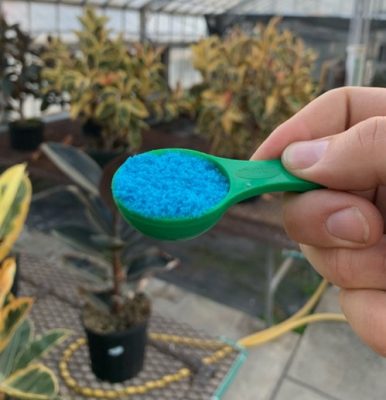
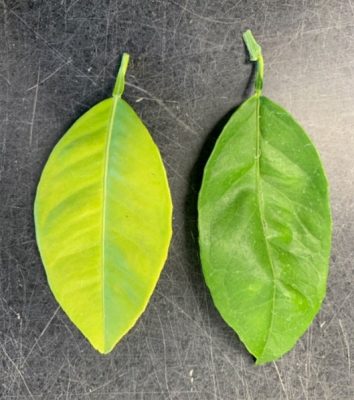
When to fertilize
Houseplants respond to fertilizer during periods of active growth. This is usually from March until October. Reduced light and temperatures throughout the winter months often render a plant inactive. It is generally recommended that plants not be fertilized at this time.
The labels on most water-soluble fertilizers recommend monthly applications. Since these nutrients are easily leached from the potting mix, plants may benefit from more frequent dilute applications. If one teaspoon per quart of water is recommended for monthly feedings, one could feed bimonthly using only one-half a teaspoon per quart or weekly using a quarter teaspoon per quart. This gives the plant a steady, continuous supply of nutrients. This type of regime is often recommended for flowering plants like African violets. When fertilizing houseplants, always apply fertilizer to an already moist potting soil to avoid root damage. Follow the directions on the label. More is not better and excess nutrients can harm roots and leaves.
Overfertilization
Browning roots and leaf tips, wilting, poorly shaped leaves, and a white crust on pot rims may indicate over fertilization. Excess nutrients in the potting soil will desiccate or burn tender roots. High concentrations of nutrient salts also prevent the plant from taking up water, so wilting is observed.
Often, leaching the potted plant with copious amounts of water will reduce excessive fertilizer salt levels. Be sure water can drain freely. Another solution would be to repot the plant, gently removing as much of the old potting mixture as possible and replacing it with fresh medium.
Keep houseplants healthy and thriving by practicing good watering practices, meeting their light and temperature requirements, and providing adequate nutrition through a regular fertilization program.
By Dawn Pettinelli, Associate Extension Educator, PSLA
Questions? Contact:
UConn Soil Nutrient Analysis Laboratory
Department of Plant Science and Landscape Architecture
Phone: 860.486.4274
Email: soiltest@uconn.edu
Website: soiltesting.cahnr.uconn.edu
UConn is an equal opportunity program provider and employer.
©UConn Extension. All rights reserved.
